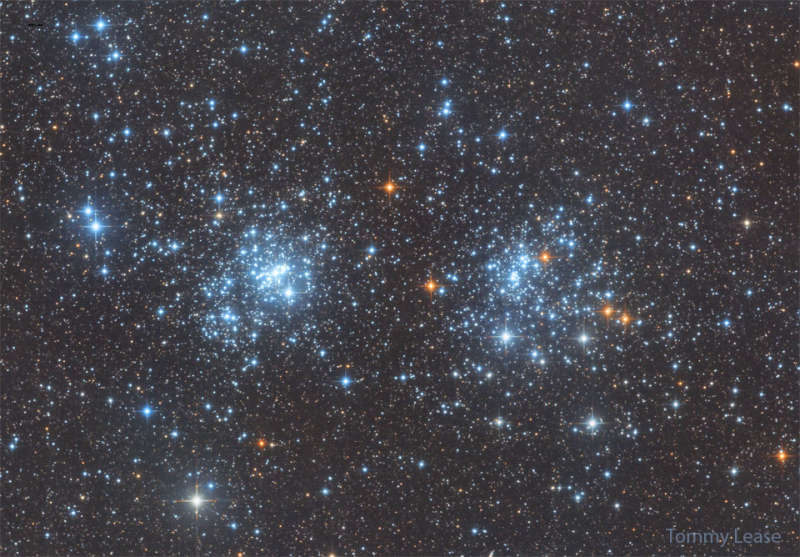
|
Credit & Copyright: Tommy Lease
Explanation:
Few star clusters this close to each other.
Visible to the unaided eye from
dark sky areas,
it was cataloged in
130 BC by Greek astronomer
Hipparchus.
Some 7,000 light-years away,
this pair
of
open star clusters
is also an easy binocular target, a
striking
starfield in the
northern constellation of the mythical Greek hero
Perseus.
Now known as
h and chi Persei, or NGC 869 (above right) and
NGC 884,
the clusters themselves are separated by only a few hundred
light-years and contain stars much younger and hotter than the
Sun.
In addition to being physically close together,
the clusters' ages
based on their individual stars are similar - evidence that both
clusters were likely a product of the same
star-forming
region.
|
January February March April May June July August September October November December |
| ||||||||||||||||||||||||||||||||||||||||||||||||
NASA Web Site Statements, Warnings, and Disclaimers
NASA Official: Jay Norris. Specific rights apply.
A service of: LHEA at NASA / GSFC
& Michigan Tech. U.
Based on Astronomy Picture
Of the Day
Publications with keywords: open cluster
Publications with words: open cluster
See also:
- APOD: 2025 August 7 Á The Double Cluster in Perseus
- APOD: 2025 April 28 Á Gum 37 and the Southern Tadpoles
- Open Star Clusters M35 and NGC 2158
- APOD: 2025 February 25 Á M41: The Little Beehive Star Cluster
- APOD: 2025 February 11 Á The Spider and the Fly
- APOD: 2024 October 29 Á NGC 602: Stars Versus Pillars from Webb
- NGC 7789: Caroline s Rose
